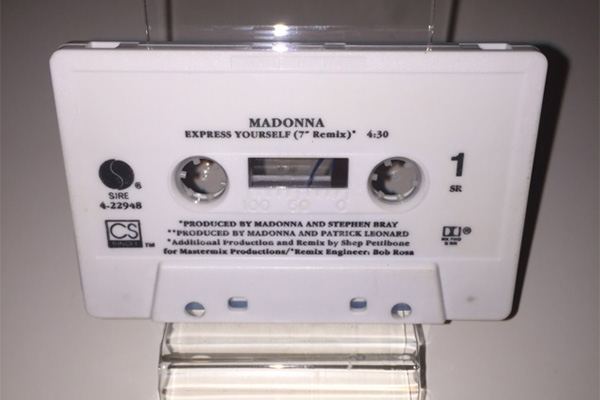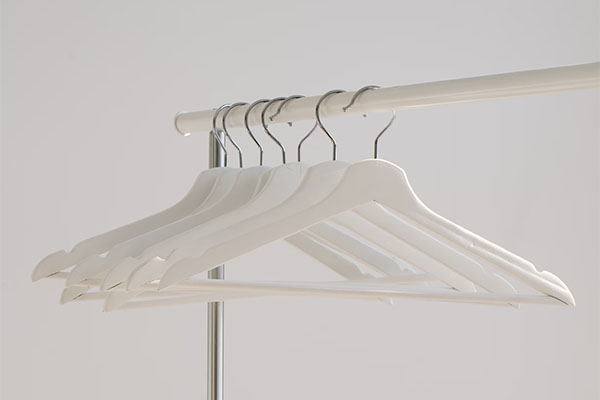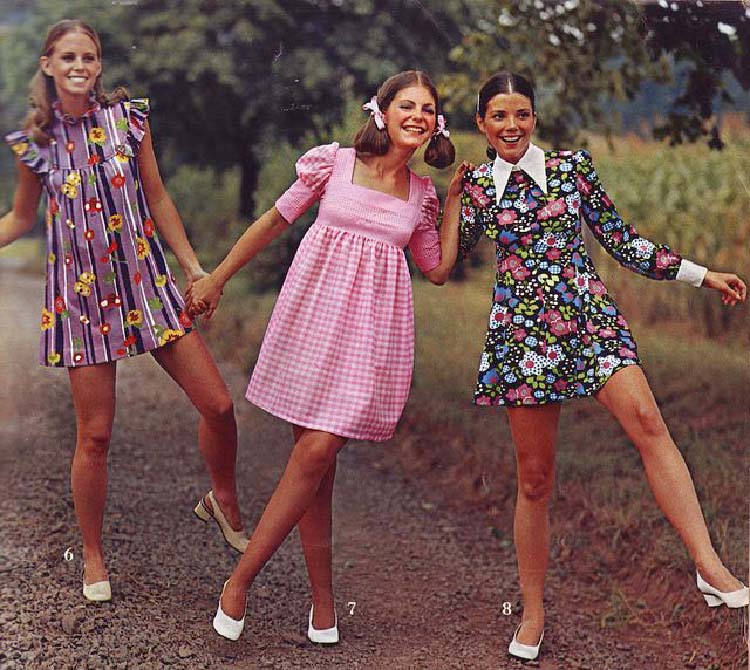10 Common Uniform Complaints and How to Answer Them
It doesn't matter how regularly you update or propose new uniform, there will always be a backlash from employees. Cue uniform complaints and wasted time and money.
From "I don't like the way it looks" all the way up to "I refuse to wear this uniform" you might need to deal with some employee uniform complaints - but here is how to answer them.
By accounting for these 10 common uniform complaints, you can plan a work uniform policy that addresses concerns and keeps your company’s core values. All of your staff will be happy with their new work clothing.
- Page Contents
- My Uniform is Uncomfortable
- I Cannot Express Myself
- The Uniform does Not Respect my Cultural Background and Beliefs
- I Have an Insufficient Supply of Uniform
- I Feel the Uniform Creates the Wrong Message
- The Uniform is Outdated
- It is Expensive to Maintain
- It is Poor Quality
- Others Do Not Wear a Uniform
- I Do Not Want to Wear a Uniform
1. My Uniform is Uncomfortable
One of the most common uniform complaints made by employees is that the uniform is uncomfortable and/or ill-fitting.
Having poor fitting uniforms can cause limitations to work performance and productivity. This risks harming staff morale and ultimately the level of company output.
As departments grow within the business, uniform is often bought in bulk so as to be more cost-effective. A "that'll do" ethic from the buyers is ultimately a false economy if poor fitting work clothing affects the business's bottom line.

Getting the correct size of each of employee is not easy - but it is worth taking the extra time.
Make sure that your next staff uniform has adjustable features. Also, by choosing a polyester blend, this can better suit different body types as the fabric will have plenty of give.
Avoid fitted workwear and pick a brand that can cover additional sizes, such as XXS to XXXL - or even up to 6XL.
2. I Cannot Express Myself
Some employees see a work uniform as a singular appearance and believe this will remove their ‘freedom’ at work. If you are moving company policy from a "dress code" to a fully branded work uniform, you might find this.
A common argument is that the uniform restricts them from expressing themselves and can be seen as unflattering.

If your staff find the uniform you have provided unflattering, this can affect their confidence and productivity within the work place. Communication can be affected because your employees are worried about being judged by clients, customers, and/or colleagues.
By creating a uniform policy that is flexible, you can create a happy but professional atmosphere. You can do this by allowing your staff the choice of wearing skirts or shorts instead of trousers or choosing the colour of their tie.
Of course we have a uniform at XAMAX®, and of course we have different departments with different needs across very different people. We used to insist everyone in the office wear the exact same garments in the exact same colours. That created backlash and discontent.
We have learned from this and now we offer multiple garment types with multiple colours, all on brand, naturally. Our reasons for offering each garment brand/type will be different to yours (we like to test what we sell)
Looking around the office no two people are wearing the exact same items. I see:
- a Carolina blue zipped hoodie over a royal blue t shirt
- a black gilet over a navy blue hoodie over a heather grey polo shirt
- a blue t-shirt
- a blue sweatshirt over a blue polo
- an orange body warmer over a royal blue polo
And don't even get me started on the production department or the warehouse!
All nicely branded with our logo or our device. Nobody looks the same as their neighbour, but we look great and part of the same team.
3. The Uniform Does Not Respect my Cultural Background and Beliefs
Whilst making sure your company’s image is the best it can be, you can only be as good as your employees perform.
A failure to recognise employees with particular religious and ethnicity concerns within your uniform policy can transmit a lack of thought. Also, it will put you in breach of The Equality Act 2010 - you really don't want to go there.

On a personal level, this also can lead to feelings of guilt on the employee’s part if you force them to choose between practising their faith or their adhering to the rules at work. Their God will win and you will lose.
Make sure your uniform policy is flexible and you embrace the diversity within your workforce. Doing this will present your company positively and you will become an equal opportunity employer.
4. I Have an Insufficient Supply of Uniform
A reliable work uniform supplier can offer lower unit costs when ordering higher quantities, therefore getting better value for your money than if you order on an as and when basis.

This will mean you can issue employees with enough uniform to rotate between wearing and putting through the laundry. Back to our policy, we are all issued 3x t shirts or polos, 2x hoodies or sweatshirts and a bodywarmer/gilet. This is plenty to get us through the working week.
You probably shouldn't be charging your employees for their uniforms anyway, but if you own it, make sure you keep the uniform when employees leave your business. You can give this to new hires, at least temporarily, and reduce the cost of ordering new uniform garments.
5. I Feel the Uniform Creates the Wrong Message
This tends to occur when businesses have not considered the staff's opinions and ideas, or when a company rebrand goes wrong. This complaint could be argued as subjective, but your should really listen to those on the front line of your business.

It's important you understand the types of work your staff will be doing, any safety considerations and their proximity to customers. A one size fits all policy will inevitably lead to uniform issues that could easily be avoided.
Ensure you involve the employees in the decision process when kitting out a new department. Not only does the uniform need to reflect the company’s core values, but also the person/position that will be wearing it.
For example, a sales role wearing a printed polo shirt may transpire a laid-back office approach. This may not be too successful in a pitch to a client looking to spend thousands with you.
Order purpose-orientated clothing to maximise the benefits.
6. The Uniform is Outdated
Uniform can become less of a priority when work focus shifts towards meeting targets and other day-to-day tasks that keep the business in business.
Trends shift which can leave your staff feeling out of place when meeting customers and/or travelling to and from work. Before you know it everyone is embarrassed to be seen in their uniforms.

Monitor your competitors and the wider clothing market, just like you would with other marketing efforts. Your uniforms are a large part of your branding so staying ahead of the curve, not behind it, keeps you top of your customer's minds.
As a result, your employees will be proud to show off your brand and will be more confident in doing so.
7. It is Expensive to Maintain
Most companies want to provide their employees with the best uniform clothing they can possibly afford, but often that is not in the employees’ best interests. Remember your employees are the ones having to take care of their uniforms, so it's important you opt for garments that are easy to wash and iron.
The argument often arises when employees are expected to foot the bill for dry-cleaning or need to iron clothes daily to meet with a company’s strict uniform guidelines.

Avoid causing unnecessary stress and expense and try not to cut into employee’s personal time with impractical garments.
If you want to ease employees over monetary concerns whilst maintaining your policy, emphasise the fact that most workers are eligible to claim back tax on washing uniform.
Be practical, not luxurious.
8. It is Poor Quality
On the flip side of the previous point, as more companies attempt to source their uniforms on a limited budget, this can lead to poor quality, short-life clothing. Often tying in with the uniform complaints being “uncomfortable”, but this can contribute to an employee not being able to perform their job to their best.
Cheap clothing tends to have low quality stitching which can lead to tears and breakages after minimal wear. It can fall apart in the wash, or become misshapen, discoloured and generally look tatty within a few weeks.

Ensure you factor this in when putting together your uniform order.
By proposing an increased budget on your initial uniform order and working with your work uniform supplier to get the best out of your budget, you can be confident that it will last longer and give you the best return on investment.
Avoid spending the minimum as, more likely, this leads to spending more in the long run.
9. Others Do Not Wear a Uniform
If different individuals within your business have different flexibility on the uniform, this can lead to a complaint of inequality or favouritism.

It is important to reiterate that you assign uniforms based on who requires it to perform their job effectively rather than just through a boss’ whims. Those in your shop may wear a uniform but the back office admin team might not. This is fine, but you would need to justify this choice.
By mandating a uniform, the company shows it takes great pride in the appearance of those who work for them, so everyone should be included really.
10. I Do Not Want to Wear a Uniform
The question is: can an employees refuse to wear work uniform? Well, that all depends on your employee contract, but more often than not, the answer is an emphatic NO.
This is one of the most frequent uniform complaints you will tackle as employees often fear change. But it doesn't have to be like that...

Highlight the benefits of the change whilst understanding their viewpoint, highlighting benefits such as, improved team unity, improved brand awareness, and working towards a common aim.
Emphasise that it is more than just an “employee uniform” - it is part of communicating a message to customers. Not only does it advertise the company but also shows employees they are part of something much bigger than their everyday duties.
Conclusion
Remember, you can't please everyone all of the time. As hard as it is to accept, uniform complaints will always end up being lodged.
However, by considering employee concerns and happiness, you can limit the number of complaints you receive, easing the transition to a work uniform policy that works for everyone.
Stay organised and conduct reasonable research into what your employees want and need from their work clothing. Then figure out what your budget is. In doing so, you ensure that you get the best return from your investment and that there is not a frequent need for replacing garments.
- Why Embroidery Looks Better on Polos Than T-Shirts – And What That Means for Your Brand - 29th December 2025
- 6 Visual Cues That Shape Workplace Culture - 23rd September 2025
- How to Roll Out a Workplace Uniform Policy - 23rd September 2025
